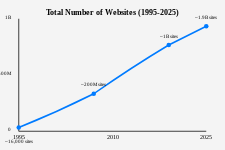Though some might criticize the debt implications or the strategy, there is a reason Verizon is pursuing an acquisition of Frontier: it is one way to gain scale in the home broadband market.
Consider that although all telcos trail the two leading cable providers (Comcast and Charter) in national market share (those two firms have at least 63 percent national share, Verizon has just nine percent share compared to AT&T at 23 percent share.
That is a result of the smaller geographic footprint Verizon has, relative to AT&T, Comcast and Charter.
ISP | Subscribers (millions) | Market Share (%) |
Comcast (Xfinity) | 32.1 | 32.6 |
Charter (Spectrum) | 30.4 | 30.9 |
AT&T (Fiber) | 22.6 | 23 |
Verizon (Fios) | 9.2 | 9.3 |
Lumen (CenturyLink) | 4.8 | 4.9 |
Cox | 7 | 7.1 |
Altice USA | 4.7 | 4.8 |
Other (including smaller ISPs) | 1.6 | 1.6 |
Total | 98.5 | 100 |
U.S. internet service providers compete on a geographic basis and not all providers face all other providers. Comcast and Charter, both cable companies, generally do not compete head to head. Neither do AT&T, Verizon and Lumen Technologies.
But sheer numbers of homes and other locations passed vary as well, with Comcast and Charter passing the most U.S. homes.
ISP | Estimated Homes Passed (Millions) |
Comcast | 60 |
Charter | 55 |
AT&T | 30–35 |
Verizon | 15–20 |
Lumen | 10–15 |
Frontier | 10–15 |
Altice USA | 8–10 |
Windstream | 6–8 |
ISPs also generally count small business broadband accounts within their “home broadband” totals, as well.
ISP | Estimated Homes & Small Businesses Passed (Millions) |
Comcast | 65–70 |
Charter | 60–65 |
AT&T | 40–45 |
Verizon | 20–25 |
Lumen | 15–20 |
Frontier | 12–15 |
Altice USA | 10–12 |
Windstream | 7–9 |
Also, differences in “homes and businesses” passed by any single ISP’s network long have mattered for assessments of the degree of competition. For example, when looking at telco fiber-to-home competition for cable hybrid fiber coax networks, the actual degree of competition has been shaped by the huge cost of upgrading telco copper access networks to fiber.
That has limited the actual degree of competition between telcos and cable companies for decades, as it rarely is the case that a given telco has FTTH deployed ubiquitously in all its geographies.
ISP | FTTH Homes & Small Businesses Passed (Millions) | Total Homes & Small Businesses Passed (Millions) | FTTH as % of Total Passings |
AT&T | 25–30 | 40–45 | 60–67% |
Verizon | 17–20 | 20–25 | 80–90% |
Lumen | 5–7 | 15–20 | 25–35% |
Frontier | 6–8 | 12–15 | 50–53% |
Windstream | 3–4 | 7–9 | 35–45% |
Consolidated | 1.5–2 | 4–5 | 30–40% |
Traditionally, the “best” data we have had on the market share positions of cable and telco competitors has come from Verizon areas, as that is were FTTH facilities are most-ubiquitously deployed. And in those areas, Verizon has been able to gain a bit more than 40 percent market share, while the local cable operator has been able to hold on to 45 percent to 55 percent of the market, with other independent providers holding generally single-digit shares but growing.
In a growing number of markets third-party providers have targeted areas where telco FTTH is not available, and in such areas have generally been able to garner up to 20 percent share.
In some instances, where a cable company mostly competes with a municipal fiber network, and the local telco has no appreciable residential and small business fiber coverage, the municipal provider tends to get 20 percent to 30 percent market share.
Provider Type | Estimated Market Share (%) |
Cable Company | 60–70% |
Independent ISP | 20–30% |
Telco (non-FTTH) | 5–15% |
Other ISPs | 2–5% |
The degree of “other ISP” market share is shaped by the coverage area selected by the attacking independent ISP. Generally speaking, such ISPs will choose portions of an incumbent’s territory to operate in, rather than overbuilding an entire city or town, for example.
As in the case of telco-cable competition, that necessarily restricts the degree of head-to-head competition across an entire market area, and is reflected in the lower take rates we generally see when a cable company competes against any fiber provider that does not cover the whole local market.


